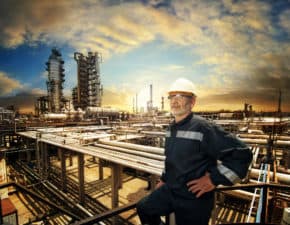In a recent interview, Eric Nuttall of Sprott Asset Management referred to Baytex Energy Corp. (TSX:BTE)(NYSE:BTE) as “the go-to high beta name” for investors in the event of an oil price recovery. In other words, should oil prices be in the early stage of a bull market (a strong possibility given current prices relative to prices that are necessary to encourage drilling in the U.S.), Baytex can be expected to outperform substantially.
Investors do have concerns with Baytex. These concerns relate to the huge debt load; currently, Baytex has a net debt of about $2 billion including working capital deficit. In 2015 this worked out to a net-debt-to-cash flow ratio of 3.8, well above the peer group average of 2.6.
The big concern is that should oil prices average in the mid-$30s or lower, Baytex could be required to borrow more to fund its operations, which could lead to the bank breaching its financial covenants (debt limits the bank puts on Baytex). This means Baytex could be restricted from borrowing more.
A look at Baytex’s current debt situation
Baytex ended 2015 with approximately $1.6 billion of long-term debt. This is a fairly large amount of long-term debt (a large portion of which comes from their purchase of Aurora in 2014). Fortunately, none of this debt is due until 2020 (with large repayments not due until 2021), so it’s not a concern to medium-term investors.
In addition to the long-term debt, Baytex also had credit facilities, which consisted of an $800 million loan and a US$200 million loan. As of December 31, 2015 this gave Baytex total credit facilities of $1.076 billion. At the time, only $257 million of these facilities were drawn, leaving Baytex with about $820 million of undrawn room on its credit facilities—plenty of liquidity to get through even a very difficult 2016.
The main issue is that Baytex lenders have several covenants on Baytex’s debt. In early December Baytex was successful in relaxing several of these covenants, and the new covenants stated that Baytex could not exceed senior debt (which refers to bank loan principal plus long-term debt principal) that is more than 5.25 times EBITDA (up from 4.75). Baytex ended 2015 with senior debt-to-EBITDA of 2.97, which meant it was not immediately at risk of breaching its revised covenants.
However, 2016 could have easily brought a breach of these debt covenants, especially if oil stayed under US$40/bbl. This could result in a decline in cash flow as well as Baytex needing to borrow to cover a free cash flow deficit (which would increase debt). The end result would be cash flow (and EBITDA) declining and debt rising, which could push the bank through its covenants.
Baytex once again achieved covenant relaxation
Fortunately, Baytex likely dodged this outcome. Last week, Baytex once again announced that its financial covenants were revised to provide even more financial flexibility. This time, Baytex reduced its credit facilities to approximately $750 million (US$575 million) from the over $1 billion it previously had.
In addition, Baytex has granted its banks security over its assets, which basically means it’s pledging some of its assets against its debt. In exchange for this, Baytex has been granted much more flexible covenants, which should allow the company to easily weather oil prices in the US$35-40 range.
The new terms are that Baytex must not exceed senior secured debt (which is basically just the value of the drawn credit facilities and excludes long-term debt) of five times EBITDA. As of December 31, 2015, Baytex had senior secured debt of only 0.49 times EBITDA. This means that Baytex shouldn’t breach its covenants under nearly any realistic scenario in 2016.








